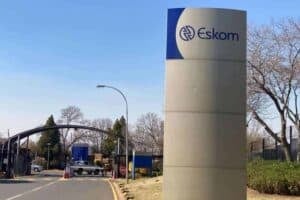Cosatu’s proposal to relieve Eskom of R250bn of its debt using state pension funds was at the centre of earnest discussion at Nedlac.

Efforts to address Eskom’s R450 billion debt burden have taken a back seat to the government’s focus on fighting the Covid-19 pandemic.
“We cannot say that we have a debt solution and as soon as we settle down on the [Covid-19] related issues we will be able to give direction on what should happen to the debt,” Minister of Public Enterprises Pravin Gordhan said on Wednesday.
He was responding to questions in a joint parliamentary committee briefing where Eskom management provided an update on the utility’s recovery plan and its progress in the unbundling process.
The power utility, which has been described as the lifeblood of South Africa’s economy, produces 90% of the country’s electricity and has made progress in meeting some of the early targets related to its separation into three separate entities (generation, distribution and transmission).
It has also made progress in meeting key elements of the turnaround strategy, but still faces challenges – including an unreliable generation fleet, declining revenues and an outdated business model – and cannot service its debt.
The R250bn question
Eskom chief executive Andre de Ruyter said in a separate briefing last month that the utility would have to achieve a debt balance of R200 billion in order for it to be financially sustainable and not require assistance from government.
Prior to the lockdown, government was in advanced discussions with business and labour social partners in the National Economic Development and Labour Council (Nedlac) about the feasibility of using money from the Public Investment Corporation (PIC) and two development banks to relieve Eskom of R250 billion of its debt through a special purpose vehicle.
The discussions, spurred by a proposal from trade union federation Cosatu, unfolded quite rapidly, reaching an “advanced” stage in March before the Covid-19 pandemic hit South African shores.
Just last week the idea of the PIC being involved in Eskom’s bailout resurfaced, when PIC board chair Reuel Khoza was interviewed by eNCA. Khoza said the investment management firm, which holds R90 billion in bonds in Eskom, had developed a discussion document that proposes, among other things, converting the bonds into equity.
With regard to Cosatu’s proposal, Gordhan said the broad framework for the R250 billion bailout is close to finalisation and that Nedlac partners will meet “within the next week or so to see if we have an adequate meeting ground” on some of the issues in the proposal.
Last year Gordhan appointed the chief executive of the South African Institute of Chartered Accountants (Saica), Freeman Nomvalo, as Eskom’s chief restructuring officer to interrogate the utility’s debt burden and collate proposals on how to deal with it.
On Wednesday Gordhan told members of Parliament that those proposals, as well as anything new that has been put forward with regard to tackling Eskom’s debt, will be interrogated.
Internal trading
Speaking on Eskom’s restructuring De Ruyter again emphasised that the entity is “not moving slowly” by opting for a divisionalisation or corporate reorganisation strategy as opposed to a full legal separation as initially proposed by the Department of Public Enterprises (DPE) in its restructuring roadmap.
According to the roadmap, the complete legal separation of the three divisions would have been completed by December 2022, but Eskom’s own timeline – which will be the baseline moving forward – only sees full divisionalisation being achieved by March 2022, with a date for legal separation yet to be confirmed.
“This approach allows us to prototype and road-test the three divisions before we go to a legal unbundling, and [this] will derisk the legal restructuring programme,” said De Ruyter.
Eskom has appointed different boards and divisional management directors for generation, transmission and distribution, and has developed divisional financial reporting structures.
De Ruyter said Eskom is working with the DPE to develop a market operator and a central purchasing agency to allow the transmission division to act as a buying agent for electricity generated by independent power producers.
At the moment Eskom has internal power purchase agreements in place between its transmission division and 27 power stations in its generation division.
“We are running an energy market internally in order to simulate what will be required once the full nationalisation and restructuring has taken place,” he explained.
Brought to you by Moneyweb
For more news your way, download The Citizen’s app for iOS and Android.






